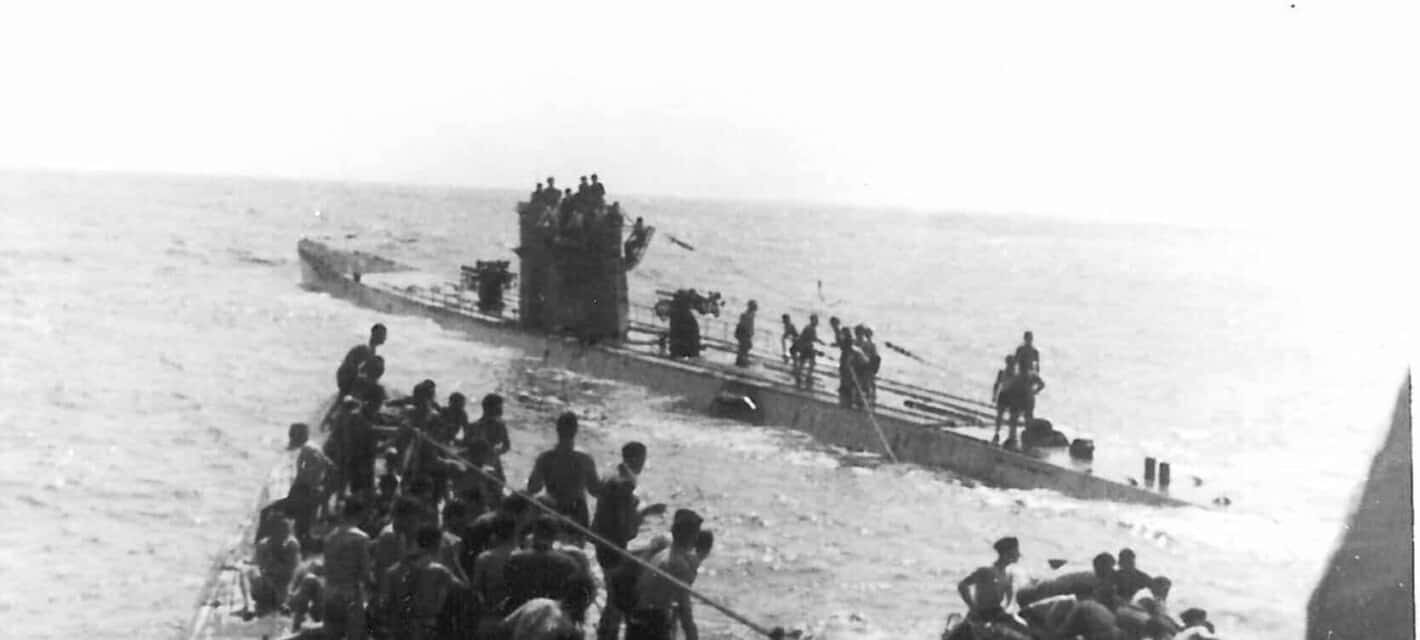On this day, during WW II, in 1942, a German U-boat, sank the British ship ‘The Laconia’. The HMS Laconia was a British troop ship and it was carrying several thousand soldiers and sailors. There were also many Italian Prisoner of War on board the ship. In total, more than 1400 men died when the Laconia was sunk. The commander of the German sub, Capt. Werner Hartenstein tried to rescue as many of the survivors as possible, this was because he realized that there were many Italian POWs on board the sinking ship.
The Laconia was a former Cunard White Star passenger liner that was requisitioned by the British Royal Navy and was used as a transport ship for British troops. The Laconia was suitable for the transport of troops as it was large and had many cabins. The Royal Navy added some guns and anti-aircraft weapons to the ship. It was heading for England when it encountered U-156, a German U-boat or submarine. The Laconia had no defense against the U-boat. The sub attacked the ship with torpedoes and they hit the Laconia’s stern below the waterline. The lives of all the passengers some 2200 were placed in danger. The ship began to sink very quickly.
The U-Boat commander began to rescue the many men and sailors in the water. The majority of those who had been on the ship were Italian prisoner of wars. The German commander was appalled that he had probably killed and endangered the lives of so many Italian allies. He also called in an Italian submarine in the area to help in the rescue operation.

The German sub immediately informed the Allies by morse code that they had surfaced for humanitarian reasons, to ensure that they were not attacked by any Allied planes or ships. The Allies believed that it was a trap and ignored the German communication. An American B-24 Bomber was sent to the area where the Laconia was sinking. The German U-Boat commander had draped a Red Cross Flag around the hull of the submarine. Despite this the B-24 bomber ignored it- he believed that it was a ruse. The B 24 began to bomb the submarine and damaged it and forced it to submerge. This meant that the there was no ships or vessels in the area to rescue the many soldiers and sailors in the water. This meant that approximately 1400 men were doomed to drown in the icy South Atlantic waters.
The supreme commander of the German U-boat fleet, Doenitz, had been monitoring the rescue efforts. He was angered by the B-24s attack on the U-boat that had been trying to rescue people from danger and death. He issued an order that no more efforts be made to help any survivors from sunken ships in the future because of what became known as the ‘Laconia Incident’. The sinking of the HMS Laconia and the subsequent attack by the B 24 led to a new and more brutal phase in the naval war.

